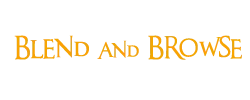What are the advantages of electronic signature in insurance ?
The electronic signature in insurance contracts has many advantages, for insurers as well as their customers.
Advantages for insurers
For insurance companies, The implementation of the electronic signature is beneficial on the commercial level. Indeed, customer relations are more fluid, more flexible, with significantly shorter treatment deadlines. Therefore, it simplifies the work of daily advisers, while optimizing business processes.
Moreover, The electronic signature in insurance contracts limits the use of paper, as well as prints and postal shipments. Without forgetting the reduction of deadlines, allowing more to manage more files. It is therefore synonymous with cost reduction.
Advantages for customers
From the point of view of customers, The electronic signature in insurance is a response adapted to new consumption methods that appeared with digital.
From the search for information to the comparison of the offers, a significant part of the customer journey is now online. Without forgetting the steps taken within the framework of a contract, such as claims declarations. It is therefore logical to digitize the key step that is the subscription of the insurance contract.
Thus, the electronic signature contributes to providing a tailor -made experience, focused on the needs and preferences of each customer. Besides, it is not intended to replace the “traditional” relationship: the insured people who wish to do so have the possibility of meeting their agency advisor or contacting him by phone.
A secure and legally valid signature
Articles 1366 and 1367 of the Civil Code recognize e-signature as a reliable identification process, having the same convincing value as a writing on paper. So, handwritten signature and electronic signature have equivalent legal value.
The latter is based on 3 main principles of security:
- The signatory’s identity verification using an authentication system.
- The guarantee of the integrity of the document: Once signed, it cannot be modified or amended.
- The choice of a level of security adapted according to the criticality of the document to be signed.
THE EIDAS regulations (Electronic Identification Authentication and Trust Services), which defines a European framework for electronic identification and trust services, distinguishes 4 levels of electronic signature.
- Simple electronic signature (level 1) is often used for IARD -type contracts, such as home or automotive insurance, but also for complementary health. Here, the risk of signature dispute is low and the need for limited identification. The identity verification can, for example, be carried out using a simple code sent by SMS on the signatory’s mobile phone. The integrity of the document is guaranteed by a qualified horoding and its traceability by electronic evidence.
- Advanced electronic signature (level 2) Strengthens security thanks to the verification of the national identity card (CNI) of the subscriber and the use of a virtual smart card. The key: obtaining a European certificate ETSI 102 042, making it possible to identify the signatory with certainty.
- Advanced electronic signature with qualified certificate (level 3) is frequently used in savings and provident trades. Indeed, there is a risk that the insured denies his signature because the chosen product does not offer the expected results. This type of signature requires a face -to -face meeting with a registration operator and allows the obtaining of an ETSI 101,456 certificate.
- Qualified electronic signature (level 4) is generally applied to specific documents, such as notarial acts, for which authentication is fundamental. It meets the same security requirements as the advanced signature and requires a qualified electronic signature creation system (SSCD).
How to implement electronic signature in insurance contracts?
For Set up an electronic signature solution in the insurance sectorit is necessary to precisely measure the level of risk linked to the contract, as well as the consequences for the insurer at the financial level, but also in terms of image.
The insurance company must be particularly vigilant if there is a systemic risk, which can lead to a massive contestation of signatures. In all cases, the nature of the contract and regulatory constraints must be clearly identified for Define the optimal safety level.
If the simple signature is distinguished by its ease of use, it does not make it possible to verify the identity of the subscriber with total certainty. The advanced signature, for its part, allows the creation of a certificate of sustainable electronic signature, but it has a more intrusive character.
Finally, The electronic signature implementation strategy must be adapted to the contractualization channels used : Subscription of online insurance contract, by phone, face to face, or even three at a time …
Simpler, faster and more suited to new customers’ usesthe electronic signature in insurance is not lacking in assets. Especially since it offers guarantees equivalent to those of a handwritten signature, in terms of legal validity and security. However, it is essential to choose an adequate electronic signature level, depending on the specificities and risks linked to each insurance contract.





